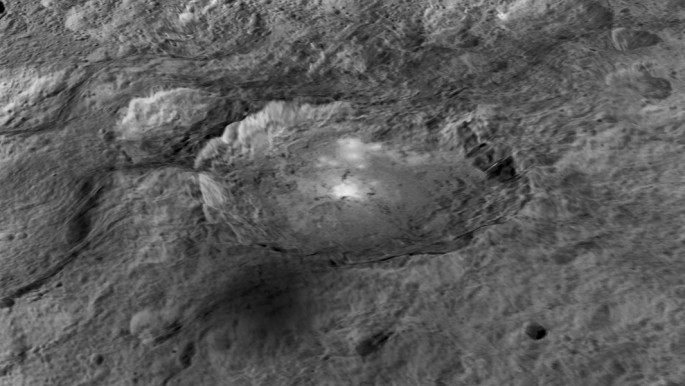Revealing the complex and dynamic surface of dwarf planet Ceres, NASA just released a new video last Wednesday, August 5, to show unprecedented views of the planet that are never before seen.
This new footage shows a video tour of Ceres that was posted on Youtube from a compilation of images captured during NASA's Dawn mission which is a probe that has been in orbit with the alien world from a distance of 1,200 miles above the surface, which is the closest point a spacecraft has ever been to Ceres.
Scientists are on a mission to gain a better understanding of the dwarf planet since they believe that this body which is the largest object located in the major asteroid belt between Mars and Jupiter, is an ancient relic of the infant solar system, unchanged for at least 4 billion years. This new data about the dwarf planet can unlock the mysteries of how the solar system began and evolved through millions of years.
One of the features of Ceres that has peaked the interest and curiosity of mission scientists are the mysterious bright spots that are found on the surface of the dwarf planet. Dawn spacecraft has captured numerous images of the spots which is located in a crater called Occator, some two miles deep.
Since the discovery of these glowing spots, scientists are now focused on finding out its source and what geological processes are involved with these bizarre features, theorizing that these could be made from ice or water.
Latest findings reveal that these bright spots found inside the Occator crater which are creating various light wavelengths apparently does provide enough evidence on the theory that these spots are made of ice. The spots' albedo or its power of reflectivity, is not high enough for ice concentrations.
According to Dawn's principal investigator Chris Russell of the University of California, Los Angeles, the team will still search for more data to back up their theories of the mysterious bright lights on the surface of Ceres.
Russell explains that the team will now be looking for new, higher resolution data during the mission's next orbital phase to compare the spots and their reflective salt properties.
Apart from these bizarre spots, another odd feature was detected on Ceres called "The Pyramid" where scientists estimate its height to Mount McKinley in Alaska which is the highest point of North America.



























